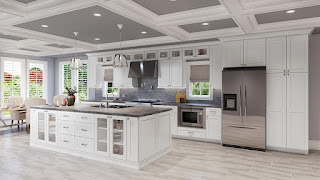Lamp Woodworking Plans for Custom Lighting Solutions
The allure of handcrafted lighting fixtures is undeniable. A custom-made lamp, meticulously crafted from wood, offers a unique blend of artistry and functionality, enhancing the ambiance of any space. This comprehensive guide provides detailed woodworking plans for creating several distinct lamp styles, catering to varying skill levels and aesthetic preferences. From simple bedside lamps to more elaborate pendant lights, these plans offer a roadmap to crafting exquisite lighting solutions for your home or as bespoke gifts.
I. Essential Tools and Materials
Before embarking on any woodworking project, it's crucial to ensure you possess the necessary tools and materials. The specific requirements will vary depending on the chosen lamp design, but a core set of tools will be common across most projects.
A. Essential Hand Tools:
- Measuring Tape: Accurate measurements are paramount for precise cuts and assembly.
- Pencil: For marking cutting lines and other design elements.
- Chisels: For fine detail work, shaping, and mortise-and-tenon joinery.
- Hand Saw or Coping Saw: For cutting wood to size, especially useful for intricate curves.
- Sandpaper (various grits): For smoothing surfaces and achieving a refined finish.
- Clamps: To securely hold pieces together during assembly and gluing.
- Screwdrivers (Phillips and flathead): For securing hardware.
- Mallet or Hammer: For driving chisels and other tools.
B. Essential Power Tools (optional, but highly recommended for efficiency):
- Table Saw: For accurate and precise cuts, especially for larger pieces.
- Jigsaw: For intricate cuts and curves.
- Drill Press: For creating accurate holes for hardware and electrical components.
- Router: For creating decorative edges, shaping, and mortises.
- Random Orbital Sander: For efficient sanding of large surfaces.
C. Materials:
- Wood: Select a hardwood like oak, maple, cherry, or walnut for durability and aesthetic appeal. Consider the wood's grain pattern and color when choosing. Softwoods like pine are suitable for simpler projects but may require more care.
- Wood Glue: A high-quality wood glue is essential for strong and durable joints.
- Wood Finish: Choose a finish that complements the wood's natural beauty and provides protection, such as polyurethane, varnish, or oil-based finishes.
- Electrical Components: This includes the lamp socket, wire, cord, plug, and switch. Ensure all components are rated for the appropriate voltage and wattage of the bulb.
- Hardware: Screws, bolts, nuts, washers, and other fasteners as needed, depending on the lamp design.
II. Simple Table Lamp Plan
This design is ideal for beginners, utilizing straightforward joinery and readily available materials. The lamp base is a simple cylindrical shape, while the shade can be a commercially purchased fabric shade or a custom-made wooden shade.
A. Base Construction:
Cut a piece of wood into a cylinder using a table saw or a lathe. The dimensions will depend on your preferred size. Sand the cylinder smooth and apply the chosen wood finish. Drill a hole in the top of the cylinder to accommodate the lamp socket and wiring.
B. Shade Construction (optional):
If opting for a wooden shade, construct a cylindrical frame using smaller pieces of wood, similar to the base. You may need to use dowels or other joining techniques to create a sturdy frame. This can then be covered with fabric or left as is.
C. Assembly:
Carefully insert the lamp socket into the drilled hole in the base. Connect the wiring according to the manufacturer's instructions. Attach the shade to the base, if using a custom wooden shade.
III. Advanced Pendant Lamp Plan
This plan presents a more challenging project, involving more intricate joinery and potentially the use of a lathe for shaping components. This lamp features a more elaborate, geometric base and a unique shade design.
A. Base Construction:
The base could be constructed using several pieces of wood, joined together to form a geometric shape, such as a hexagon or octagon. Mortise-and-tenon joinery would be an ideal technique for creating a strong and visually appealing connection between the pieces. The base could also be turned on a lathe for a more refined, curved shape.
B. Shade Construction:
The shade could be crafted from multiple thin wooden slats, carefully joined together to create a lattice-like structure. This design allows for light to diffuse beautifully. Alternatively, a more complex, carved shade could be created, potentially requiring advanced woodworking skills and specialized tools.
C. Assembly:
After carefully sanding and finishing all components, assemble the base and attach the electrical components. Secure the shade to the base using appropriate hardware. Ensure all wiring is properly insulated and secured.
IV. Safety Precautions
Always prioritize safety when working with woodworking tools and electricity.
- Wear appropriate safety gear, including eye protection, hearing protection, and dust masks.
- Use caution when operating power tools and follow all manufacturer's instructions.
- Ensure proper ventilation when working with wood finishes and adhesives.
- Turn off the power supply before making any electrical connections.
- Inspect all electrical components for damage before use.
- Never touch exposed wiring while the lamp is plugged in.
By carefully following these plans and prioritizing safety, you can create stunning, custom-made wooden lamps that will illuminate your home for years to come. Remember that careful planning, precise execution, and attention to detail are key to achieving a successful outcome. Experiment with different wood types, finishes, and designs to create unique lighting solutions that reflect your personal style.


















